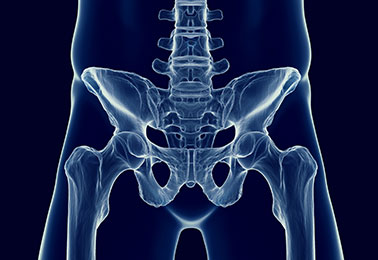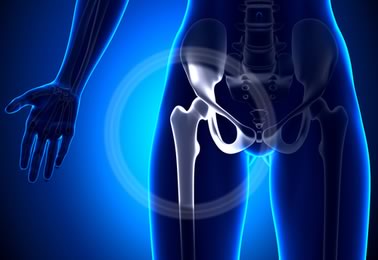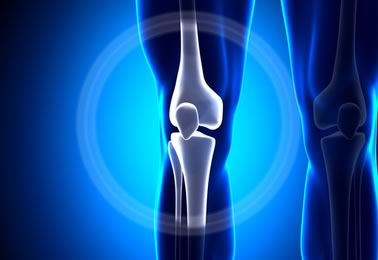COMPLETE Pelvic Floor Physical Therapy Exercise Program
Kegels, Erectile dysfunction, Incontinence, pelvic pain, low back pain
This course includes:
![]() 2.5 hours on-demand video
2.5 hours on-demand video
![]() 13 articles
13 articles
![]() 2 downloadable resources
2 downloadable resources
![]() Access on mobile and TV
Access on mobile and TV
![]() Full lifetime access
Full lifetime access
![]() Certificate of completion
Certificate of completion
Start TODAY!
COMPLETE Pelvic Floor Physical Therapy Exercise Program
Kegels, Erectile dysfunction, Incontinence, pelvic pain, low back pain
What This Course Teaches
- Safely Participate with a low back pain relief and core muscle strengthening exercise program instructed by a Licensed Doctor of physical therapy.
- Professional guidance from beginning to end, teaching you how to continue independently and safely for LIFE! Program includes day 1 to day 90.
- Effectively and easily learn movement and exercise techniques to lessen pain, improve movement, increase strength and completed anywhere with minimal equipment
- Learn efficient and effective therapeutic exercises so they no longer need to scour through YouTube looking for the right exercise for their needs or condition
- Immediately learn effective stretching and flexibility exercises to address recent or long standing issues in nearly every part of their bodies
- Learn and understand how to safely and effectively participate with exercises to complete a 90-day program without confusion and have full time email support
- Once purchased, students will have their program for life with a easy to follow PDF document, so they may refer to it anytime
- No more endlessly searching YouTube for appropriate and safe exercises to address pain, stiffness, weakness and dysfunction for your body
Who This Course is For

- Anyone who goes to YouTube looking for exercises
- Anyone that desires a professionally guided physical therapy program
- Anyone that is interested in how to safely and effectively initiate an exercise program
- Beginners looking to start becoming more active and improve overall flexibility, strength and body movement
- All adult age groups of individuals wanting to safely start an exercise program
- Busy people that wish to complete an easy effective exercise program accessed anytime and anywhere
- Busy people that do not know which exercises are appropriate for them to complete
- Anyone looking for a specially designed physical therapy program that does not require health insurance
- Anyone looking for a specially designed physical therapy program that reside in remote areas or have transportation deficits
Requirements
- No experience needed
- Students will need a device with Internet access
- Students will need simple exercise bands, they may use ones they already own, or purchase an inexpensive set at our Shopify store
Description

You are professionally guided through the program by a trained and experienced professional thru a series of videos and pdfs providing step-by-step instructions guiding you thru each day of the program. All phases of the program can be done at home and are safe for both men and women.
A questionnaire provides an objective method to track your progress. Unlimited 24/7 access. No appointments. No waiting rooms. No travel.
Our program can help you with the following:
- Difficulty urinating or having bowel movements
- Feeling like your bowel movements are not complete
- Leakage of urine or feces
- Frequently feeling the need to use the bathroom
- Feeling like you need to force out urine or feces
- Stopping and starting in the middle of urinating
- Long-term constipation
- Needing to change positions to get out a bowel movement
- Painful Urination
- Unexplained lower back pain
- Unexplained pain in your genitals, anus, or lower abdomen (pelvic region)
Pelvic Floor PT Course Overview
27 sections • 70 lectures • 2 hour 46 minutes total

- Complete Downloadable and Printable Guide for your program
- Join our Desire Wellness Pelvic Floor Fitness Program Community Group
- Welcome to the Desire Wellness Pelvic Floor Physical Therapy Exercise Program
- Learn How to Track Your Progress
- Learn about Your Equipment, how to Prepare Your Space, and about Standard Resistance Exercises
- Learn to Understand Your Body and Recognize the Difference between Pain and Soreness
- Understanding Posture, Stretching, and Injury Prevention before starting
- Pelvic Floor Education — Preview
- Quick Quiz to Make Sure You are Ready to Begin
- Pelvic Floor Self Assessment Questionnaire
- Week 1 Exercises: Isolated Pelvic Floor Muscle Strengthening, Isometric Core Activation, Core and Pelvic Floor Co-contraction with Ball Raise, Core and Pelvic Floor Co-contraction with Hip Fall Outs — Preview
- Week 2 Exercises: Happy Baby Stretch, Single Knee to Chest, Diaphragmatic Breathing, Piriformis Stretch — Preview
- Week 3 Exercises: IT Band Stretch w/Strap, Hamstring Stretch w/Strap, Adductor (groin) Stretch w/Strap, Hip Flexor/Quadricep Stretch w/Strap
- Week 4 Exercises: Isolated Pelvic Floor Strenghtening, Core & Pelvic Floor Co-contraction w/Straight Leg Raise, Side Clamshells for Glute Activation, Bridges w/Loop Band
- Pelvic Floor Self Assessment Questionnaire
- Week 5 Exercises: Isolated Pelvic Floor Strengthening in Quadruped, Isolated Pelvic Floor Strengthening in Sitting, Exercise Ball in quadruped with Core and Pelvic Floor Muscle, Bird Dog Exercise in quadruped with Core and Pelvic Floor Muscle Co-contraction
- Week 6 Exercises: Isolated Pelvic Floor Strengthening in Sitting, Seated Resisted Hip Internal and External Rotations w/Band, Seated Exercise Ball Press w/Core and Pelvic Floor Co-contraction
- Week 7 Exercises: Isolated Pelvic Floor Strengthening in Standing, 4-way Resisted Hip Exercises in Standing w/Band, Sit to Stand w/Core and Pelvic Floor Co-contraction, Sit to Stand w/Band Progressionw w/Core and Pelvic Floor
- Week 8 Exercises: Rows w/Band w/Core and Pelvic Floor Co-contraction, Isolated Pelvic Floor Strengthening in Standing, Pallof Press w/Band w/Core and Pelvic Floor Co-contraction, Wall push ups w/Core and Pelvic Floor Co-contraction
- Pelvic Floor Self Assessment Questionnaire
- Week 9 Exercises: Chops w/Band w/Core and Pelvic Floor Co-contraction, Reverse chops w/Band w/Core and Pelvic Floor Co-contraction, Dribbling Ball Quickly to address Phasic Contractions, Throw and Catch Ball Quickly Against Wall to address Phasic Work
- Week 10 Exercises: Reverse chops w/Band w/Core and Pelvic Floor Co-contraction, Squats w/Core and Pelvic Floor Co-contraction, Sumo squats w/Core and Pelvic Floor Co-contraction, Lateral Lunges w/Core and Pelvic Floor Co-contraction
- Week 11 Exercises: Reverse Lunges w/Core and Pelvic Floor Co-contraction, Lateral Lunges w/Core and Pelvic Floor Co-contraction, Squats with Knee Drive w/Core and Pelvic Floor Co-contraction, Monster Walks Upright and Mini-squat
- Week 12 Exercises: Jogging in Place, Jump and Tap, Jumping Jacks
- Final Pelvic Floor Self Assessment Questionnaire
- Injury Prevention and Maintenance
- Resources for Further Reading and Support Communities
Symptoms of Pelvic Floor Dysfunction
Pelvic floor dysfunction is when you have difficulty coordinating your pelvic floor muscles, resulting in issues with urination and defecation (bowel movements), as well as sexual dysfunction and more. Dr. Alona Stein, certified Pelvic Rehabilitation Practitioner through the Herman & Wallace Pelvic Rehabilitation Institute, will teach you her easy to follow program that may help you if you suffer from pelvic floor disfunction.
The following are common symptoms of pelvic floor dysfuntion:
- Difficulty urinating or having bowel movements
- Feeling like your bowel movements are not complete
- Leakage of urine or feces
- Frequently feeling the need to use the bathroom
- Feeling like you need to force out urine or feces
- Stopping and starting in the middle of urinating
- Long-term constipation
- Needing to change positions to get out a bowel movement
- Painful Urination
- Unexplained lower back pain
- Unexplained pain in your genitals, anus, or lower abdomen (pelvic region)
Causes of Pelvic Floor Dysfunction
Pelvic floor dysfunction can be genetic. Some people simply have weaker muscles and connective tissue.
However, it can also be caused by other things including:
- An injury to the pelvis
- Surgery in the pelvic area
- Aging
- Being overweight or obese
- Pregnancy and childbirth
- Using the bathroom too often or straining too hard when going to the bathroom
The most common causes of this condition in women are pregnancy, aging, and being overweight. If you were pregnant and did not deliver your baby vaginally, you can still get pelvic floor dysfunction. This is because pregnancy itself changes your pelvic area, regardless of how you give birth.
Since your nerves control your muscles, people with neurological disorders like Parkinson’s disease may also experience pelvic floor issues.
Diagnosis for Pelvic Floor Dysfunction
To diagnose pelvic floor dysfunction, your doctor will ask you questions about your health. This will include gathering information about your bowel movements, history of urinary tract infections, and any other conditions that can cause pelvic floor dysfunction. If you are a woman, your doctor may ask you if you have been pregnant, and if you have pain during sex.
Your doctor may perform an internal exam with their fingers, as well as an external exam to see how your muscles are functioning. There are other tests to determine how well your pelvic floor muscles are working. These include:
- Placing electrodes on the surface of your pelvic area to measure how well the muscles function,
- Performing an anal manometry to measure how well the anal sphincter is working. This is when a thin flexible catheter with an uninflated balloon on the end is inserted through your anus. It goes into your rectum and measures pressure movements as it is slowly withdrawn several times,
- Administering a defecating proctogram, a test that includes a thick enema that shows up in an x-ray so your doctor can see how your muscles work to push it out,
- A uroflow test to show how effectively your bladder empties each time you urinate.
Treatments for Pelvic Floor Dysfunction

The treatment your doctor may recommend for pelvic floor dysfunction depends on how the condition is for you and the symptoms you have.
Overactive Bladder. If it gives you an overactive bladder, your doctor may recommend Kegel exercises, topical estrogen cream, or prescription drugs to help.
Kegel exercises are when you tighten your pelvic muscles for five seconds and then release them. You can do 10 to 20 repetitions, three or four times a day. This can help strengthen your pubococcygeal muscles.
Fecal incontinence. Your pelvic floor dysfunction can also cause fecal incontinence. This is when the muscles that control your bowel movements don’t work properly, and there is leakage. For this, your doctor might recommend changing your diet, pelvic floor exercises, or surgery to stimulate nerves in the pelvis or tighten the sphincter muscle.
Prolapse. In some cases of pelvic floor dysfunction, prolapse occurs. This is when your rectum or vagina falls out of place because it is no longer properly supported by the pelvic floor muscles. Kegel exercises can help with this, but one of the primary treatments for prolapse is surgery.

General treatments. In general, treatments for pelvic floor dysfunction include:
- Muscle relaxers or other prescription medications
- Physical therapy to retrain and strengthen the muscles
- Behavior changes, like reminding yourself to avoid straining when using the bathroom
- Lifestyle changes, like doing yoga or taking baths to learn how to relax the pelvic floor muscles
You can do pelvic floor exercises to strengthen your muscles regardless of your age or gender. You can also do them whether or not you’ve given birth. If you are planning to become pregnant, or are pregnant now, doing pelvic floor exercises can help prevent dysfunction later.
Desire Wellness offers a Complete Pelvic Floor Exercise Program
You are professionally guided through the program by a trained and experienced professional thru a series of videos and pdfs providing step-by-step instructions guiding you thru each day of the program.
All phases of the program can be done at home and are safe for both men and women.
A questionnaire provides an objective method to track your progress.
Unlimited 24/7 access. No appointments. No waiting rooms. No travel.
Start TODAY!

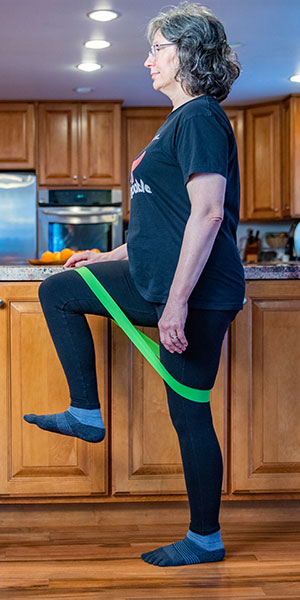
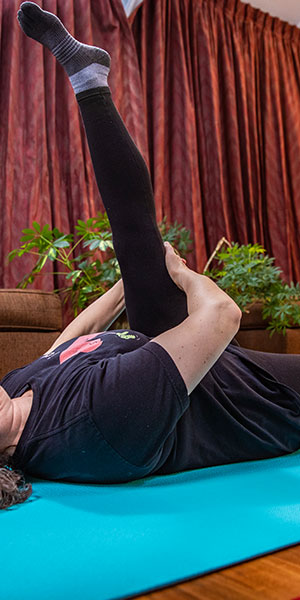
Advantages of Desire Wellness
- Research and Evidence based
- Objectively Track Your Progress
- Feel Better in 5 Days
- Unlimited 24/7 Access
- No Appointments, Waiting, or Travel
We Want to be Part of Your Success Story!

